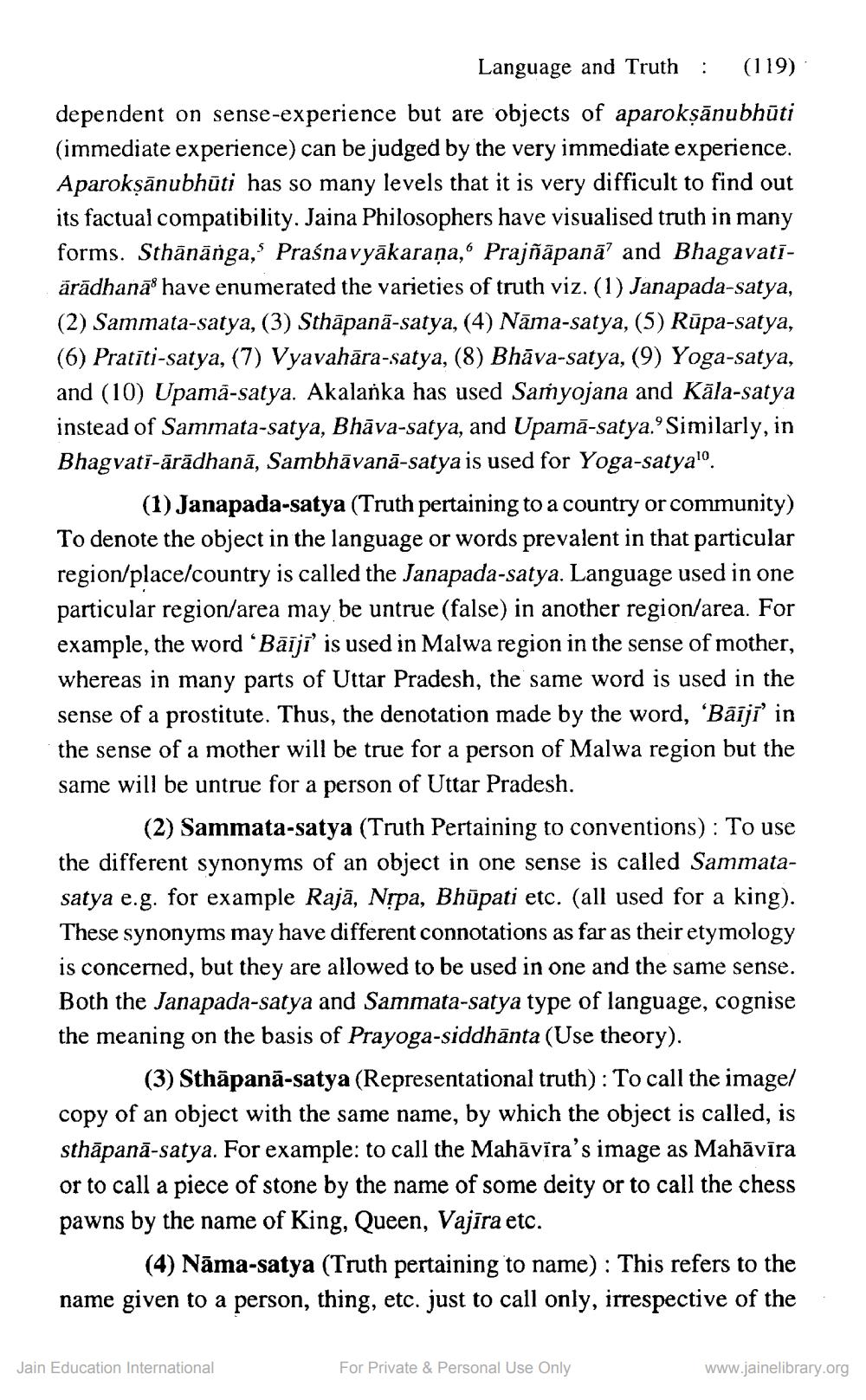________________
Language and Truth: (119) dependent on sense-experience but are objects of aparokşānubhūti (immediate experience) can be judged by the very immediate experience. Aparokşānubhūti has so many levels that it is very difficult to find out its factual compatibility. Jaina Philosophers have visualised truth in many forms. Sthānānga, Praśnavyākaraņa, Prajñāpanā' and Bhagavatiärādhanā have enumerated the varieties of truth viz. (1) Janapada-satya, (2) Sammata-satya, (3) Sthāpanā-satya, (4) Năma-satya, (5) Rupa-satya, (6) Pratiti-satya, (7) Vyavahāra-satya, (8) Bhāva-satya, (9) Yoga-satya, and (10) Upamā-satya. Akalanka has used Samyojana and Kala-satya instead of Sammata-satya, Bhāva-satya, and Upamā-satya.'Similarly, in Bhagvati-ārādhanā, Sambhāvanā-satya is used for Yoga-satya'.
(1) Janapada-satya (Truth pertaining to a country or community) To denote the object in the language or words prevalent in that particular region/place/country is called the Janapada-satya. Language used in one particular region/area may be untrue (false) in another region/area. For example, the word 'Bāiji' is used in Malwa region in the sense of mother, whereas in many parts of Uttar Pradesh, the same word is used in the sense of a prostitute. Thus, the denotation made by the word, 'Bāīji' in the sense of a mother will be true for a person of Malwa region but the same will be untrue for a person of Uttar Pradesh.
(2) Sammata-satya (Truth Pertaining to conventions): To use the different synonyms of an object in one sense is called Sammatasatya e.g. for example Rajā, Nīpa, Bhūpati etc. (all used for a king). These synonyms may have different connotations as far as their etymology is concerned, but they are allowed to be used in one and the same sense. Both the Janapada-satya and Sammata-satya type of language, cognise the meaning on the basis of Prayoga-siddhānta (Use theory).
(3) Sthāpanā-satya (Representational truth): To call the image! copy of an object with the same name, by which the object is called, is sthāpanā-satya. For example: to call the Mahāvīra's image as Mahāvīra or to call a piece of stone by the name of some deity or to call the chess pawns by the name of King, Queen, Vajīra etc.
(4) Nāma-satya (Truth pertaining to name) : This refers to the name given to a person, thing, etc. just to call only, irrespective of the
Jain Education International
For Private & Personal Use Only
www.jainelibrary.org




